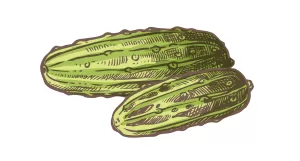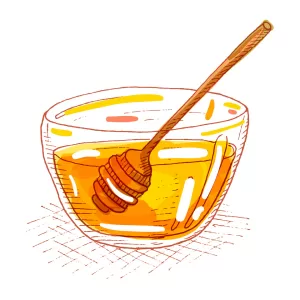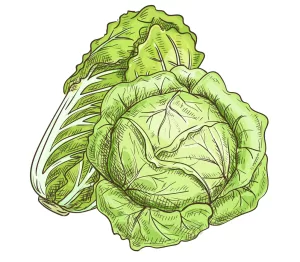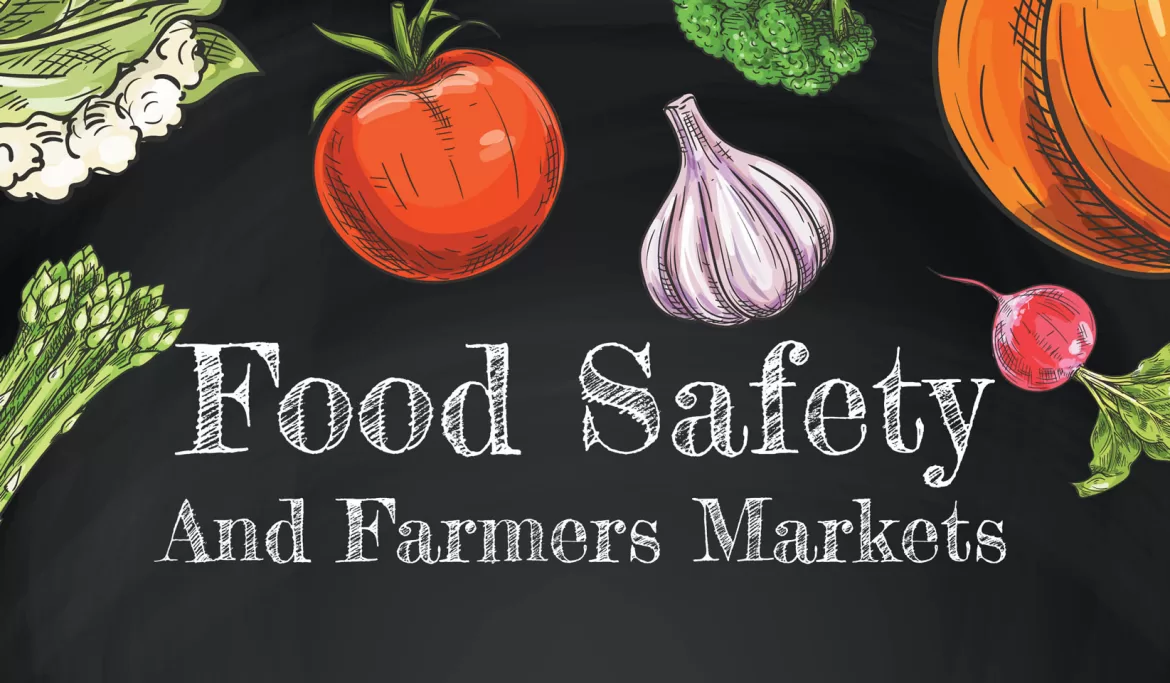Shopping local while traveling in an RV adds to the fun. Being mindful of some basic guidelines can help to reduce the risks of that enjoyment being overshadowed by a foodborne illness.
By Phillip Meeks
March 2023
Among the pleasures of the RV lifestyle is immersing oneself in the local foods scene: farmers markets, u-picks, farm-to-fork events. If you haven’t already made a habit of enjoying fruits and vegetables produced in the same locales where you spend your summers, you should. One truly learns a region by its farms and foods.
As splendid as locally grown foods are, though, food safety and preventing foodborne illness should always be at the back of your mind. Spoilage organisms such as molds, yeasts, and certain bacteria can give foods a foul odor and an unappealing look, but these typically don’t cause illness. Other organisms are considered food pathogens and can lead to serious health complications, or worse. Unfortunately, the presence of the latter isn’t always apparent, and a can of beets that looks and tastes fine can be tainted with life-threatening bacteria. Arm yourself with solid food-safety knowledge before your next RV adventure. Know which foods are at risk. Understand the different food pathogens that could be at play, and become familiar with the steps that must be taken to minimize dangers.
Sanitation Is The First Step
When buying farm-fresh products or picking peaches, apples, or berries, proper sanitation is the first key to avoiding contact with food pathogens. Collect with clean hands, and wash fruits and vegetables before use. Look for clues that would indicate potential E. coli contamination from livestock manure, or simply ask the farmer. Are animals fenced out of crop fields? Are the fields irrigated from water sources to which cows have access? Is manure properly composted before it’s added to the soil?
Good Agricultural Practices (GAP) that will lessen the likelihood of safety-related contamination of fruits and vegetables between the field and the market are encouraged, but these are largely voluntary. Research is necessary to discover whether the market you frequent or the community in which you’re staying has any audit requirements relevant to GAP standards. Strive to know your local farms and farmers. Most do an exceptional job of delivering the most high-quality food they can, so they’ll usually be happy to share with customers all they do to guarantee that quality.
Raw milk can be purchased legally in some locations but not others. The topic is a contentious one, but unpasteurized milk can support the growth of several foodborne illness bacteria, including Salmonella, Campylobacter, and Listeria. Fortunately, raw milk can be home-pasteurized easily on your RV stove by pouring it into a saucepan set inside a larger pot filled with cool water. Heat this until the milk is brought to 165 degrees Fahrenheit for 15 seconds.
Farm-fresh eggs are a particular treat for folks accustomed to eggs that come from supermarkets, but eggs are another common source of Salmonella, so be careful how you handle and use them. Unwashed eggs have a “bloom” membrane that confines bacteria to the out-side of the shell, and they can be stored safely at room temperature for up to three weeks. Once they’re washed, though, they must be kept at 40 degrees Fahrenheit or cooler to prevent contamination.
The Greatest Worry With Canned Foods
When using farm products fresh or when preserving them by dehydration or freezing, cleanliness can cover a multitude of sins, but if you’re canning (or purchasing home-canned foods), botulism is a potential issue.
 States have varying regulations regarding the canning and processing of locally grown foods. Some allow specific products to be processed in a home kitchen, while others require processing to take place in a commercial facility. However, all will make a distinction between high-acid and low-acid foods.
States have varying regulations regarding the canning and processing of locally grown foods. Some allow specific products to be processed in a home kitchen, while others require processing to take place in a commercial facility. However, all will make a distinction between high-acid and low-acid foods.
Clostridium botulinum is the primary bacteria of concern with canned foods. C. botulinum spores are common in the environment, such as in soil and water, and while these themselves are harmless, they’ll create a toxic byproduct once they are in an oxygen-free and low-acid environment. This toxin binds to nerve endings and can lead to a painful death.
One environment with these anaerobic, low-acid conditions is a newborn’s immature gastrointestinal system. That’s why experts caution that one should never feed honey (which can contain C. botulinum spores) to babies under 1 year of age.
The other environment that’s perfect for the development of this bacteria is a sealed can or vacuum-sealed package of vegetables or meats.
Botulism shouldn’t be taken lightly, but the risk can be eliminated fairly easily.
Since the 212 degrees Fahrenheit at which water boils at sea level isn’t hot enough to kill C. botulinum, a pressure canner should always be used when canning beans, potatoes, corn, meats, and asparagus. With a pressure canner, the temperatures inside each jar can be elevated to as much as 250 degrees Fahrenheit.
Supporting The Acid
The magic pH threshold for botulism is 4.6. Fruits, pickles, jams, jellies, and sauerkraut will have a lower pH than this, making them unfit for C. botulinum to exist and therefore safe from botulism worries. These foods can be safely water-bath canned — also known as boiling-water canned — using a large stock pot with a lid or a similar vessel. Tomatoes are closer to the line, and while most will be acidic enough, there are low-acid tomatoes, too. So, the recommendation is to add an approved amount of lemon juice, vinegar, or citric acid to canned tomatoes to ensure their safety, after which they can also be processed through the boiling-water method.
Meats and most vegetables will have a pH higher than 4.6, meaning they must be processed with a pressure canner to ensure they’re safe from botulism.
Alternatively, the environment inside each jar can be adjusted to drop the pH below 4.6. Pickled beans, pickled corn relish, and pickled asparagus are examples of how some vegetables can be processed when you don’t have access to an expensive pressure canner. You should stick closely to approved recipes from updated Cooperative Extension Service resources, as these have been formulated for safety.
If you’re buying canned goods from a farmers market or farm stand instead of processing them in the RV for your own use, a good question to ask a vendor is, “Where do you get your recipes?”
Beware The Naysayers
Most of our ancestors didn’t own pressure canners. Unfortunately, there are those who dismiss the threat of botulism in favor of “doing things the way Granny did them.” While our parents and grandparents, the Amish, and others consumed — and may continue to consume — low-acid foods processed via the water-bath method, that doesn’t mean that the threat of botulism wasn’t there.
Know that the zero-oxygen, low-acid environment inside a can of improperly processed vegetables or meats is perfect for the bacteria. Even if you’ve eaten 10,000 cans of this food with no botulism, there’s no promise that the next one won’t kill you.
Is it worth the gamble?
Flooded Fields
Another bacteria risk that travelers should keep in mind involves floodwaters and E. coli. If you’re visiting an area that experienced flooding during the growing season, it pays to be mindful of that when purchasing fruits or vegetables.
Once a crop is flooded — even if only for a few seconds — the risk of E. coli is there, and the safety of the harvested fruits and vegetables will be questionable. Soft-bodied foods such as strawberries or raspberries; leafy vegetables; or root crops are especially prone to contamination and should not be consumed even if they look fine.
If the fruit in question developed from a bloom after the floodwaters subsided, or if it’s a food that was high on the plant (above the water), was harvested weeks after flooding, and will be peeled and cooked, then the possibility of contamination will be greatly reduced. Of course, you won’t be aware of these variables yourself, but if you’re at a farmers market, it would be advisable to chat with the market manager to ensure that none of the vendors have fields in the flood zone.
One of the most rewarding aspects of the RV lifestyle is immersing oneself and one’s family in a community, experiencing its people, activities, and foods. The local farms and their products are worth exploring and can result in tremendous memories. Your travel adventures should be fueled by local foods, grown by local farmers. Nobody should ever fear farm-fresh foods, but it pays to have a basic understanding of food pathogens, how they can come into contact with the foods, and how any risks of foodborne illness can be mitigated.
Further Info
To learn more about food safety and foodborne illness and disease, visit www.fsis.usda.gov/food-safety.

